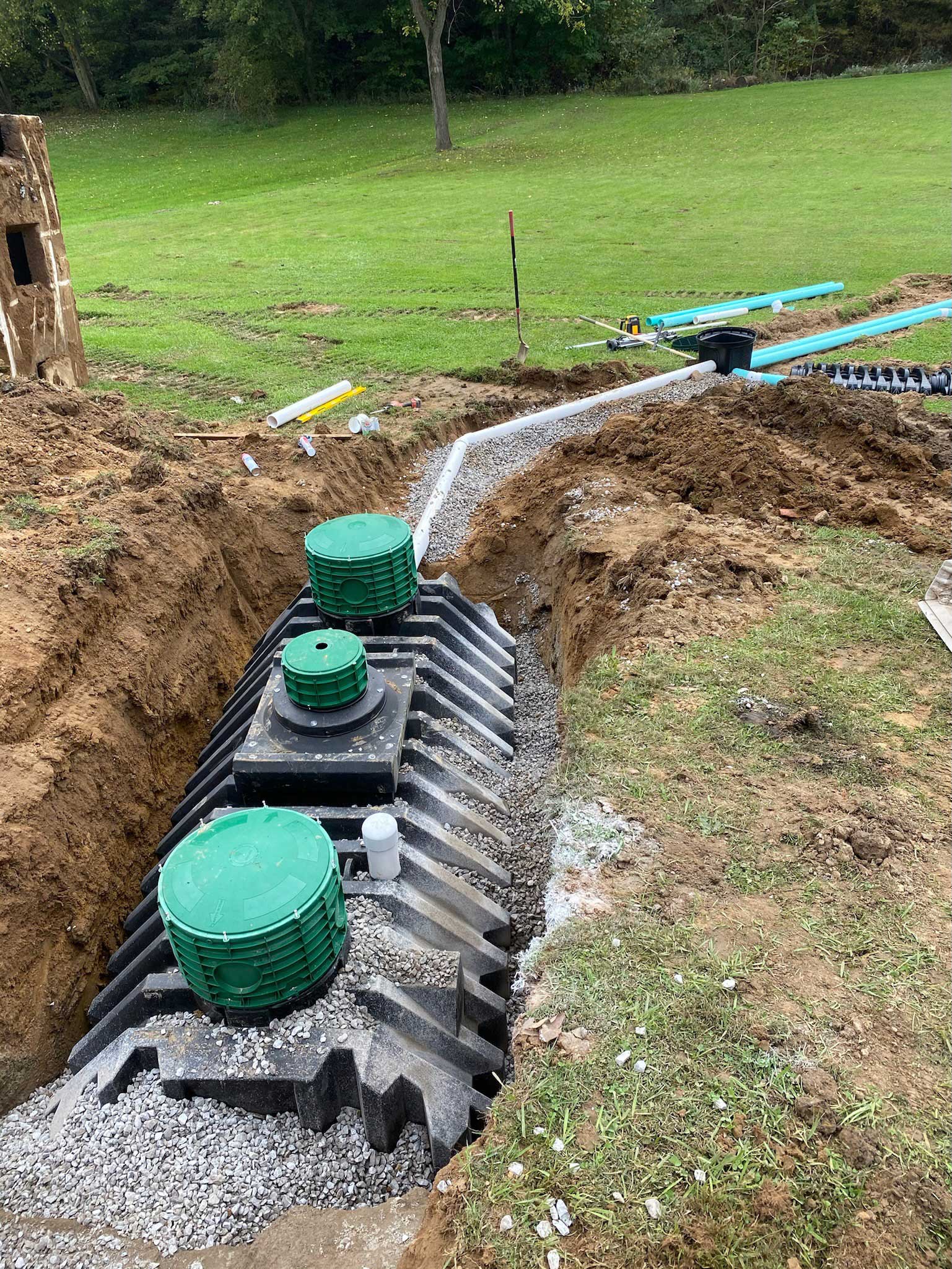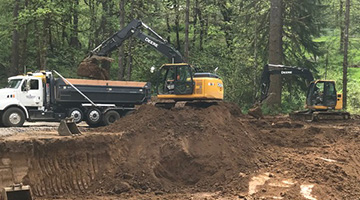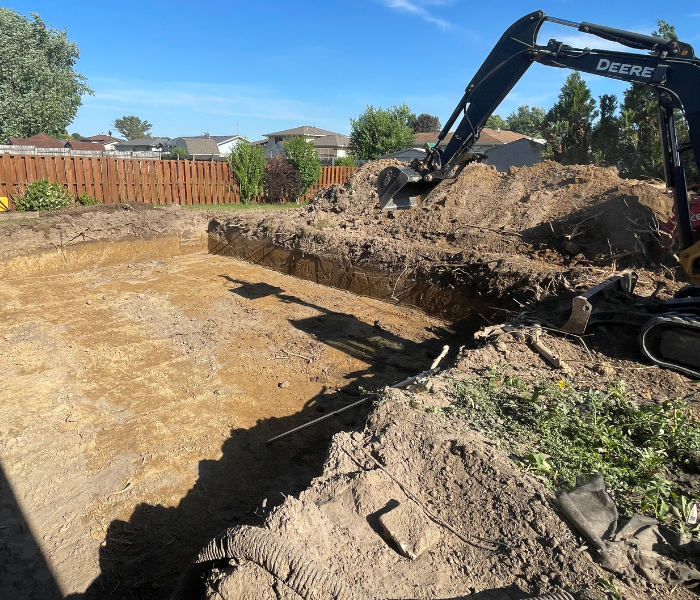Lancaster Trenching - Specialist Trenching Solutions in Lancaster, Ohio
Lancaster Trenching - Specialist Trenching Solutions in Lancaster, Ohio
Blog Article
Extensive Exploration: The Scientific Research Behind Superior Excavation Practices
The realm of excavation techniques is a domain name where scientific research intertwines with craftsmanship to discover the enigmas concealed beneath the earth's surface. From ancient hand devices to modern hydraulic excavators, the development of excavation techniques has been a testimony to human resourcefulness and technological developments. However, what truly establishes premium excavation methods apart is a deep understanding of geological concepts, paired with the use of innovative devices and methods. By exploring the science behind these techniques, we can reveal the secrets that exist underneath our feet and appreciate the precision and expertise that enter into every dig.
Development of Excavation Strategies
Throughout background, the development of excavation strategies has actually played a critical duty ahead of time construction techniques and historical discoveries. From the simple tools utilized by our forefathers to the sophisticated machinery utilized in modern times, the development of excavation techniques has significantly changed exactly how we approach different tasks.
In ancient times, manual work with fundamental devices such as wheelbarrows, shovels, and pickaxes was the primary approach of excavation. This labor-intensive procedure limited the depth and scope of excavations, typically causing slow progress and restricted access to specific websites. Nevertheless, as human beings progressed, so did the devices and techniques made use of for excavation.
The Industrial Revolution noted a turning point in excavation methods with the intro of steam-powered equipment. This technology revolutionized the area, permitting faster and much more extensive excavations. In modern times, technology plays an essential function in excavation, with innovations like GPS systems, drones, and 3D scanning enhancing accuracy and effectiveness in the area. The advancement of excavation techniques remains to form the way we construct, check out, and understand the world around us.
Role of Technology in Excavation

The integration of cutting-edge technology has actually basically changed the field of excavation, improving accuracy and effectiveness to unmatched degrees. Among the crucial technological developments that has dramatically affected excavation practices is the use of general practitioner systems. These systems permit precise mapping of excavation sites, making it possible for operators to accurately find below ground energies and frameworks. In addition, the usage of telematics in excavation equipment has actually enabled real-time monitoring of equipment performance, leading to aggressive maintenance and boosted operational efficiency.
In addition, the advent of 3D modeling and simulation software program has structured the preparation process for excavation projects. Drivers and designers can currently envision the whole excavation procedure prior to breaking ground, determining potential difficulties and maximizing process. Along with this, the application of drones in excavation activities has actually facilitated airborne surveys, volumetric dimensions, and website inspections with unmatched rate and accuracy.
Geological Principles in Excavation
An understanding of geological concepts is important for making certain the visit our website architectural stability and security of excavation sites. Geological variables play an important role in determining the expediency and safety and security of excavation i was reading this projects (dump truck companies in ohio). One vital geological concept to think about is the sort of dirt or rock present at the website. Different dirt types, such as gravel, sand, or clay, have varying degrees of stability and need various excavation methods. For example, natural dirts like clay might call for additional assistance to avoid collapses, while sandy soils might be prone to erosion during excavation.
By performing complete geological surveys and evaluation, engineers and excavators can create approaches to alleviate risks and make sure the effective completion of excavation jobs. Eventually, including geological concepts right into excavation techniques is essential for attaining secure, reliable, and sustainable outcomes.

Newest Tools for Excavation
In the world of excavation practices, contemporary innovations in tools have actually reinvented the performance and precision of excavation processes. These drones can provide detailed aerial studies of excavation sites, offering real-time data on topography and potential hazards.
An additional cutting-edge tool obtaining popularity is the implementation of 3D printing technology for developing custom excavation tools. This enables the production of specialized devices that are tailored to the details needs of a job, boosting efficiency and minimizing downtime.
Moreover, advancements in pop over to this site materials scientific research have actually caused the development of more powerful and extra resilient excavation devices. excavating ohio. Tungsten carbide-tipped excavator add-ons, for instance, deal superior performance in challenging ground problems, enhancing performance on-site
Science's Influence on Excavation Practices

Additionally, scientific research study on soil auto mechanics and geotechnical engineering has given useful understandings into dirt behavior, allowing excavation experts to make informed choices concerning excavation methods and soil stabilization techniques. Overall, science continues to drive development and renovation in excavation practices, making excavation tasks much more effective, affordable, and lasting.

Conclusion
Finally, the evolution of excavation techniques has been substantially affected by advancements in modern technology and a much deeper understanding of geological concepts. The newest tools and tools used in excavation have boosted performance and precision in the field. The application of scientific expertise has actually considerably boosted excavation practices, resulting in more reliable and lasting approaches for excavating various kinds of materials.
In the world of excavation practices, contemporary technologies in tools have reinvented the performance and precision of excavation procedures. By leveraging scientific concepts, the excavation industry has been able to significantly improve efficiency, precision, and safety in excavation procedures. GPR allows excavation teams to non-invasively check and map subsurface structures, energies, and prospective risks, allowing them to plan excavation tasks with better accuracy and reduced risk of mishaps.
In addition, clinical research on dirt auto mechanics and geotechnical engineering has actually offered useful insights right into soil behavior, enabling excavation professionals to make educated choices regarding excavation methods and soil stablizing methods. Generally, scientific research proceeds to drive innovation and improvement in excavation techniques, making excavation tasks a lot more reliable, economical, and sustainable.
Report this page